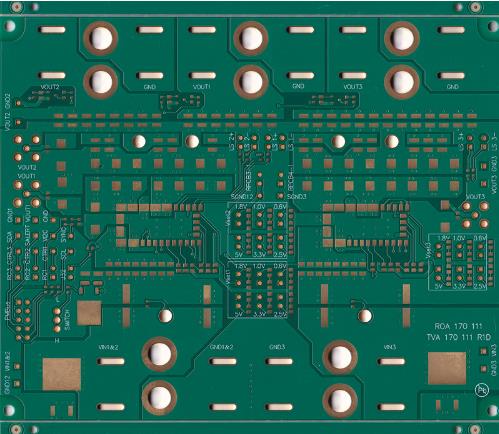In PCB design, wiring is an important step in product design. The wiring design process is the most rigorous, the skills are the best, and the workload is the greatest. It can be said that the previous preparations have been completed. PCB layout is divided into three types: single-sided wiring, double-sided wiring and multilayer wiring. PCB layout can be completed using automatic and manual routing provided by the system. Although the system provides designers with convenient operation and automatic routing with high routing rate, there are still unreasonable places in the actual design. At this time, the designer needs to manually adjust the PCB layout to obtain the best results.
The quality of PCB design has a great influence on its anti-interference ability. Therefore, in the PCB design, the basic principles of the design must be followed, and the requirements of anti-interference design should be met to achieve the best performance of the circuit.

1. The printed wire should be as short as possible; the address wire or data wire of the unified component should be as long as possible; when the circuit is a high-frequency circuit or the wiring is dense, the corners of the printed wire should be round. Otherwise, it will affect the electrical characteristics of the circuit.
2. When double-sided wiring, the wires on both sides should be perpendicular to each other, skewed or bent to avoid being parallel to each other to reduce parasitic coupling.
3. PCB should use 45° fold line instead of 90° fold line to reduce the coupling of external transmission and high frequency signal.
4. As the input and output of the circuit, printed wires should be avoided as much as possible to avoid backflow, and it is best to add grounding wires between these wires.
5. When the board surface wiring density is high, the mesh copper foil should be filled, and the mesh size is 02mm (8mil).
6. SMD pads cannot be placed through holes to avoid loss of solder paste caused by component solder joints.
7. It is not allowed to pass important signal lines between sockets.
8. Avoid horizontally mounted resistors, inductances (insertion), electrolytic capacitors and other components under the hole to avoid short circuit between the hole and the component shell after peak welding.
9. When wiring manually, put the power cord on the ground wire first, and the power cord should be on the same level.
10. The signal line cannot have loopback wiring. If there must be a loop, try to make the loop as small as possible.
11. When wiring passes between two pads without connecting to them, they should maintain a large and equal spacing.
12. The distance between wiring and wires should also be uniform, equal and maximum.
13. The connection between the wire and the pad should be too smooth to avoid small sharp corners.
14. When the center distance between the pads is less than the outer diameter of one of the pads, the width of the connecting line between the pads can be the same as the diameter of the pad; when the center distance between the pads is greater than the outer diameter of the pad When the diameter is larger, the width of the welding wire should be reduced; when there are more than 3 pads on the wire, the distance between them should be greater than the width of the two diameters.
15. The common ground of printed wires should be placed on the edge of the PCB as much as possible. The copper foil should be kept on the PCB as much as possible, so that the shielding effect is better than the long grounding wire. It will also improve the transmission line characteristics and shielding effect, and also realize the function of reducing distributed capacitance. The common ground of the printed conductors preferably forms a ring or net, because when there are many integrated circuits on the same PCB, a ground potential difference is generated due to the limitation of the pattern, which leads to a reduction in noise tolerance. When a loop is formed, the ground potential difference decreases.
16. In order to suppress noise, the grounding and power modes should be as parallel as possible to the flow of data.
Multi-layer PCBs can use several layers as shielding layers. The power layer and ground layer can be regarded as shielding layers. It should be noted that PCB design general layer and power layer are usually designed on the inner layer or the outer layer.
18. The digital area and the analog area are separated as much as possible, and separated from the analog ground in the digital ground, and finally the ground and power plane.